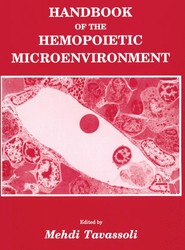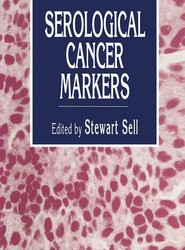(To see other currencies, click on price)
MORE ABOUT THIS BOOK
Main description:
In organizing the present volume, we had two intentions. The first was to present the best current understanding of the mechanisms of calcium mobilization during excitation contraction coupling of smooth muscle at a level suited to the needs of professionals interested in smooth muscle pharmacology and pathophysiology, while remaining appreciable by graduate and medical students. The second intention was to provide in sight into present-day controversies, as well as the latest ad vances achieved by researchers in this field. Thus, we have thor oughly discussed both the techniques and the concepts derived from their application. An attempt has also been made here to answer a number of profoundly important questions: What are the mechanisms and agents responsible for the control of contractility? What are the accompanying changes in the state of intracellular calcium ions and the mechanisms responsible for them? How does the regula tion of contractility occur directly at the level of the actomyosin activity? What role do gap junctions play in cell-to-cell coupling? What are the roles of cholinergic, adrenergic, peptidergic, and nonadrenergic noncholinergic interactions in calcium mobiliza tion in smooth muscle? What changes occur in hypertension? The impact of these recent techniques on future research is also reflected upon.
Contents:
1 Structure of Smooth Muscle.- 1. Introduction.- 2. Organization and Arrangement of Smooth Muscle.- 2.1. Organization of the Uterus and Arrangement of the Myometrium.- 3. Morphology of the Smooth Muscle Cell.- 3.1. Size and Shape of Smooth Muscle Cells.- 3.2. Plasma Membrane.- 3.3. Sarcoplasmic Reticulum.- 3.4. Mitochondria and Other Organelles.- 3.5. Myofilaments.- 4. Innervation of Smooth Muscle.- 4.1. Innervation of the Myometrium.- 5. Structure of Cultured Cells.- 6. Localization of Ca2+ in Smooth Muscle.- 6.1. Precipitating Agents, Dyes, and Autoradiography.- 6.2. Electron Probe and Electron Energy Loss Analysis of Smooth Muscle.- References.- 2 Calcium Antagonists and Ionophores.- 1. Introduction.- 2. Calcium Channel Antagonists.- 2.1. Pharmacology.- 2.2. Structure-Activity Relationships.- 2.3. Sites of Action.- 3. Calcium lonophores.- 4. Summary.- References.- 3 Calcium Compartments and Mobilization During Contraction of Smooth Muscle.- 1. Introduction.- 2. Calcium Entry.- 2.1. Intrinsic Ca2+ Leak.- 2.2. Ca2+ Entry Stimulated by Membrane Depolarization.- 2.3. Receptor-Stimulated Ca2+ Entry.- 2.4. Role of Surface Bound Ca2+.- 3. Release of Intracellularly Bound Ca2+.- 3.1. Agonist-Induced Release of Cai.- 3.2. Caffeine-Induced Release of Cai.- 3.3. Ca2+-Induced Release of Cai.- 4. Modulation of Intracellular Ca2+ Sequestration.- 4.1. Ca2+ Sequestration During Relaxation.- 4.2. Agonist-Induced Alterations in Intracellular Ca2+ Sequestration.- 5. Summary.- References.- 4 Mechanisms of Smooth Muscle Relaxation.- 1. Introduction.- 2. Relaxation Mediated by Direct and Indirect Actions on Smooth Muscle.- 2.1. Actions at the Cell Membrane.- 2.2. Intracellular Actions.- 2.3. Involvement of Endothelium in Relaxation of Vascular Tissue.- 3. Mechanisms of Relaxation.- 3.1. Relaxation Through Interaction with Cyclic Nucleotides.- 3.2. Relaxation by Interaction with Calmodulin Entry.- 3.3. Relaxation Through Blockade of Calcium Entry.- 4. Concluding Remarks.- References.- 5 Smooth Muscle Relaxants.- 1. Introduction.- 2. Beta-Adrenoceptor Agonists.- 2.1. Isoproterenol.- 2.2. Selective Beta2-Adrenoceptor Agonists.- 3. The Xanthines.- 3.1. Pharmacological Actions.- 3.2. Pharmacokinetics.- 3.3. Toxicities and Side Effects.- 3.4. Therapeutic Uses.- 4. Alpha-Adrenoceptor Antagonists.- 4.1. Prazosin.- 5. Calcium-Channel Antagonists.- 5.1. Verapamil.- 5.2. Nifedipine.- 5.3. Diltiazem.- 5.4. Perhexiline.- 6. Nonspecific Vasodilators.- 6.1. Organic Nitrates and Nitrites.- 6.2. Hydralazine.- 6.3. Diazoxide.- 6.4. Sodium Nitroprusside.- 6.5. Minoxidil.- References.- 6 Cell-to-Cell Communication in Smooth Muscle.- 1. Introduction.- 2. Cell-to-Cell Junctions.- 2.1. Structural Studies.- 2.2. Methods for Quantification of Gap Junctions.- 2.3. Functional Studies of Gap Junctions.- 2.4. Regulation of Gap Junctions.- 3. Myometrial Gap Junctions.- 3.1. Presence of Myometrial Gap Junctions.- 3.2. Function of Myometrial Gap Junctions.- 3.3. Regulation of Gap Junctions in the Myometrium.- 4. Summary.- References.- 7 Calcium Regulation of Smooth Muscle Actomyosin.- 1. Introduction.- 2. Components of the Contractile Apparatus.- 2.1. Thick Filament.- 2.2. Thin Filament.- 3. Proteins Involved in the Phosphorylation and Dephosphorylation of Myosin.- 4. Effect of Phosphorylation of Myosin Light-Chain on the Properties of Myosin.- 4.1. Functional Changes.- 4.2. Structural Changes.- 5. Effect of Tropomyosin on the Actin-Activated ATP Hydrolysis.- 6. Direct Effect of Mg2+ and Ca2+ on Actin-Activation of Phosphorylated Myosin.- 7. Evidence for the Actin-Linked System in the Regulation of Actomyosin ATPase.- 8. Summary.- References.- 8 Studies on Skinned Fiber Preparations.- 1. Introduction.- 2. Methodology.- 2.1. Skinning Procedures.- 2.2. Criteria for Acceptable Models.- 3. Intracellular Ca2+ Store.- 4. Control of Actomyosin Interaction.- 4.1. Mechanism of Ca2+ Activation.- 4.2. Cyclic Nucleotides in Smooth Muscle Relaxation.- 4.3. Catch Mechanism.- 5. Effect of Ca2+ on Mechanical and Mechanochemical Properties of Smooth Muscle.- References.- 9 Smooth Muscle Subcellular Fractionation.- 1. Introduction.- 2. Homogenization Technique.- 2.1. Potter Elvehjem Homogenizer.- 2.2. Duall Tissue Grinder.- 2.3. Dounce Tissue Grinder.- 2.4. Potter-Elvehjem All-Glass Homogenizer.- 2.5. Disintegrinder.- 2.6. Sorvall and Omni Mixer Homogenizer.- 2.7. Willem's Polytron Apparatus.- 2.8. Pressure Homogenization.- 3. Detailed Technique for Homogenization of Smooth Muscle.- 3.1. Rat Myometrium.- 3.2. Vascular Smooth Muscle.- 3.3. Vas Deferens Smooth Muscle.- 3.4. Dog Trachealis.- 3.5. Intestinal Smooth Muscle.- 4. Fractionation Techniques.- 4.1. Differential Centrifugation.- 4.2. Density Gradient Centrifugation.- 4.3. Zonal Ultracentrifugation.- 4.4. Continuous Sample Flow Density Gradient.- 4.5. Free-Flow Electrophoresis.- 4.6. Salt Extraction Method.- 4.7. Toluene-Lithium Bromide Method.- 5. Isolation of Various Subcellular Components.- 5.1. Cellular Components.- 5.2. Detailed Techniques Commonly in Use for Smooth Muscle Fractionation.- 6. Characterization of Subcellular Components.- 6.1. Morphology.- 6.2. Enzymatic Markers.- 6.3. Chemical Composition.- 6.4. Miscellaneous Markers.- 7. Special Studies.- 7.1. Membrane Orientation.- 7.2. Membrane Solubilization.- 7.3. Electrophoresis.- 7.4. Labeling Techniques.- 7.5. Labeling of Smooth Muscle Cell Surface Proteins.- 8. Conclusion.- References.- 10 Calcium-Handling Studies Using Isolated Smooth Muscle Membranes.- 1. Introduction.- 2. ATP-Dependent Ca2+ Transport.- 2.1. Subcellular Distribution.- 2.2. Substrate Dependence.- 2.3. Evidence for Active Transport.- 2.4. Mechanism.- 2.5. Modulation.- 3. Na+-Ca2+ Exchange.- 4. Passive Ca2+ Binding.- 5. Ca2+ Release.- 6. Summary and Synthesis.- References.- 11 Receptor Binding Studies on Smooth Muscle Subcellular Fractions.- 1. Introduction.- 2. Significance of Receptor Binding Studies to the Understanding of Smooth Muscle Function.- 3. Limitations of Receptor Binding Studies.- 4. Studies of Specific Receptor Systems in Smooth Muscle.- 4.1. The Muscarinic Cholinoceptor.- 4.2. The Alpha-Adrenoceptor.- 4.3. The Beta-Adrenoceptor.- 4.4. Peptide Receptors.- 4.5. Receptors for Prostanoids.- 5. Future Directions for Receptor Binding Studies in Smooth Muscle Subcellular Fractions.- References.- 12 Calcium-Handling Defects and Smooth Muscle Pathophysiology.- 1. Introduction.- 2. Alterations of Vascular Smooth Muscles in Hypertension.- 2.1. Structural and Functional Changes.- 2.2. Contraction and Relaxation.- 2.3. Calcium Content and Fluxes.- 2.4. Calcium Accumulation by Isolated Membranes.- 3. Alterations of Nonvascular Smooth Muscles in Genetic Hypertension.- 3.1. Contractility.- 3.2. Calcium Handling by Isolated Membranes.- 4. Ionic Dysfunction as a Generalized Cell Membrane Alteration in Genetic Hypertension.- 4.1. Dysfunction of Calcium Metabolism.- 4.2. Dysfunction of Sodium Metabolism.- 4.3. Calcium, Sodium, and Hypertension.- 5. Conclusion and Comments.- References.- 13 Adrenergic Interactions in Smooth Muscle Contactility.- 1. Introduction.- 2. Classification of Receptor Types: Development of Current Concepts.- 2.1. ?-and ?-Adrenoceptors.- 2.2. ?-Adrenoceptor Subtypes.- 2.3. Presynaptic Adrenoceptors.- 2.4. Postjunctional ?2-Adrenoceptors.- 2.5. Intrasynaptic ?-and -?-Adrenoceptors.- 3. The Andrenergic Neuron.- 4. Indirect Actions of Adrenoceptor Agonists and Antagonisis.- 4.1. Role of ?-Adrenoceptors in a Negative Feedback Mechanism.- 4.2. Role of ?-Receptors in a Positive Feedback Mechanism.- 5. Direct Actions of Adrenergic Drugs.- 5.1. Excitatory ?-Adrenoceptors.- 5.2. Inhibitory ?-Adrenoceptors.- 5.3. Inhibitory ?-Adrenoceptors.- 5.4. Summary.- 6. Conclusions and Future Directions for Research.- References.- 14 Cholinergic Interactions and Vascular Smooth Muscle Tone.- 1. Introduction.- 2. Acetylcholine-Induced Vasodilation Depends on Endothelial Cells.- 3. Direct Effect of Acetylcholine on Vascular Smooth Muscle.- 4. Calcium and Endothelium-Mediated Relaxation.- 5. Calcium and Vascular Smooth Muscle Contraction.- 6. Acetylcholine and Adrenergic Neuron Interaction.- 6.1. Peripheral Blood Vessels.- 6.2. Cerebral Blood Vessels.- 7. Calcium and Muscarinic Presynaptic Inhibition of Transmitter Release.- 8. Muscarinic Receptors on Adrenergic Nerve, Smooth Muscle, and Endothelial Cells.- 9. Preferential Effects of Acetylcholine on Blood Vessel Wall.- 10. Cholinergic Innervation and Acetylcholine.- 11. Is Acetylcholine the Vasoconstrictor or Vasodilator Transmitter?.- 12. Can Nerve-Released Acetylcholine Induce Vasodilation by Releasing Dilator Substance(s) from the Endothelial Cells?.- 13. Acetylcholine-Induced Membrane Hyperpolarization and Vasoconstriction.- 14. Conclusion.- References.- 15 Nonadrenergic, Noncholinergic (NANC) Neuronal Inhibitory Interactions with Smooth Muscle.- 1. Introduction.- 1.1. Criteria for Identification of NANC Mediators.- 1.2. Distribution of NANC Nerves and Smooth Muscle Responses.- 2. Existence of Intrinsic NANC Inhibitory Neurons in Gut and Elsewhere.- 2.1. Gut.- 2.2. Airways.- 2.3. Blood Vessels.- 3. Identity of NANC Inhibitory Transmitters.- 3.1. Presence of ATP or VIP in NANC Fibers.- 3.2. Release of ATP and VIP by Nerve Stimulation.- 3.3. Identity of Action of ATP or VIP with Inhibitory Mediator.- 3.4. Identity of Inhibition and Potentiation of Responses to NANC Inhibitory Mediator and to ATP or VIP.- 3.5. Nature of NANC Transmitter for Dilation of Blood Vessels.- 3.6. Difficulties in Identifying NANC Transmitters and Role of Interstitial Cells of Cajal.- 4. Conclusions.- References.- 16 Nonadrenergic, Noncholinergic (NANC) Neuronal Excitatory Interactions with Smooth Muscle.- 1. Existence of NANC Excitatory Nerves in Gut and Elsewhere.- 1.1. Introduction.- 1.2. Gut.- 1.3. Urogenital Muscle.- 2. Identity of NANC Excitatory Transmitters.- 2.1. Role of Substance P in Gut.- 2.2. ATP as NANC Excitatory Cotransmitter in Urogenital Muscle.- 2.3. Possible NANC Excitatory Transmission in Blood Vessels.- 2.4. NANC Excitatory Transmitter at Other Smooth Muscles.- 3. Conclusion.- References.- 17 Peptide Calcium Interactions in Smooth Muscle.- 1. Introduction.- 2. The Gastrointestinal Tract.- 2.1. Gastrin-Cholycystokinin.- 2.2. Vasoactive Intestinal Polypeptide (VIP), Secretin, Glucagon/Glycentin, and Pancreatic Polypeptide.- 2.3. Neurotensin.- 2.4. Motilin.- 2.5. Substance P.- 2.6. Gastrin-Releasing Peptide/Bombesin.- 2.7. Other Peptides.- 3. The Urinary Bladder/Vas Deferens.- 4. The Respiratory Tract.- 5. The Vascular System.- 5.1. Bradykinin.- 5.2. The Neurohypophyseal Peptides, Oxytocin, and Vasopressin.- 5.3. Angiotensin.- 6. The Uterus.- 6.1. Angiotensin.- 6.2. Oxytocin.- 6.3. VIP.- 7. Conclusion.- References.
PRODUCT DETAILS
Publisher: Springer (Humana Press Inc.)
Publication date: October, 2011
Pages: 488
Weight: 743g
Availability: Available
Subcategories: Biochemistry
From the same series















